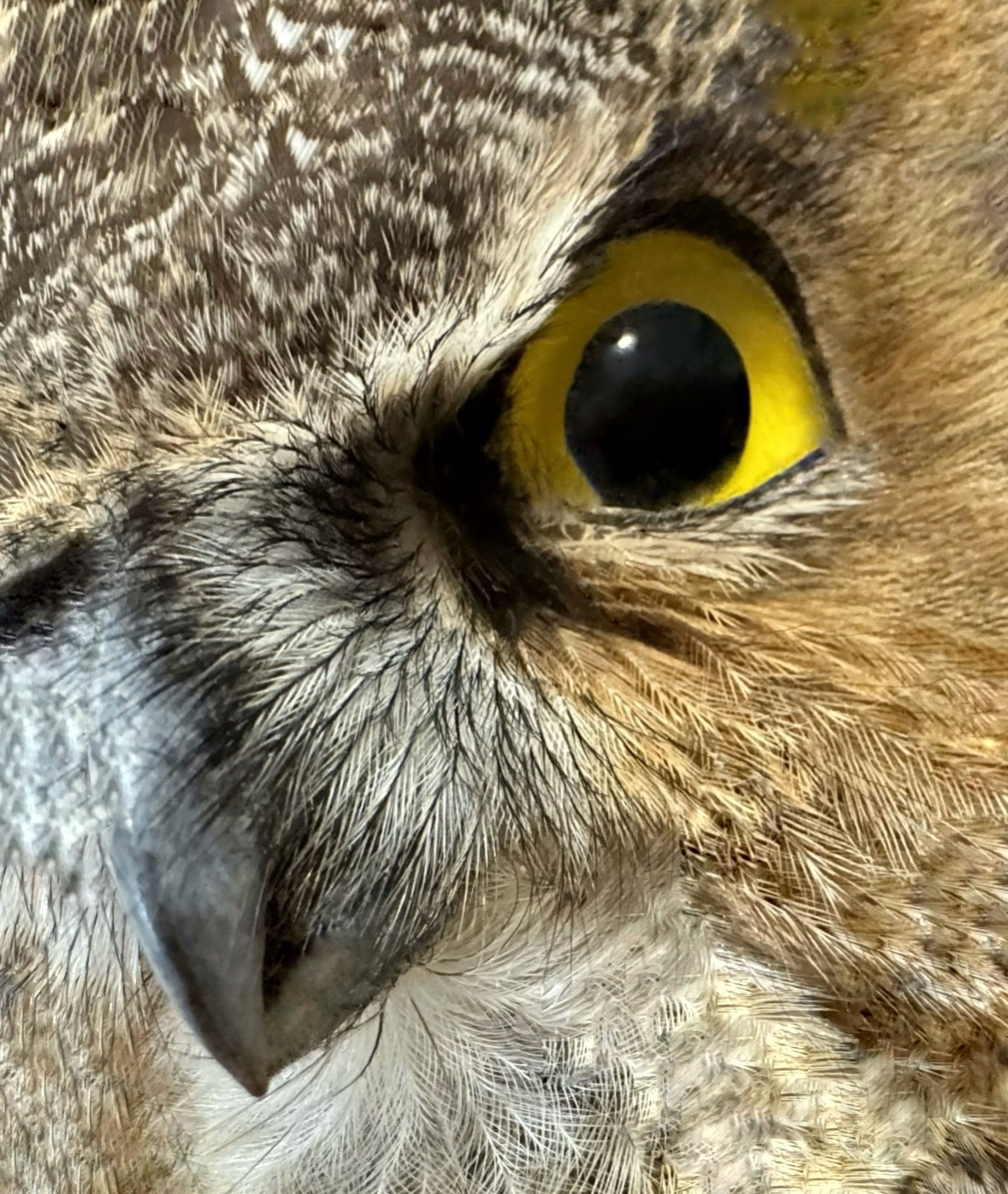Through the Woods: I can see you in the dark
Capturing the elusive great horned owl's face up close reveals its remarkable night vision and unique head-turning ability, compensating for its fixed eyes. Discover these fascinating traits and more.
Getting a closeup of a great horned owl’s face is next to impossible in the wild without powerful camera gear. Several years ago, I visited Watkins Wildlife Rescue near Sedgewickville and made the near impossible possible.
This is half of the face of a great horned owl. The yellow eye of this native North American bird is about the size of a human eye and can see at least 35 times better in the dark than we can. The great horned owl sees in black and white.
The great horned owl cannot move its eyes from side to side. To compensate for that shortcoming this owl developed the ability to turn its head around at least 180 degrees left or right. I also wanted you to see that this bird’s beak is relatively small, and its face is covered with small feathers.
Aaron Horrell is an artist and outdoorsman. He lives in Chaffee. He owns Painted Wren Art Gallery in Cape Girardeau.
Connect with the Southeast Missourian Newsroom:
For corrections to this story or other insights for the editor, click here. To submit a letter to the editor, click here. To learn about the Southeast Missourian’s AI Policy, click here.












